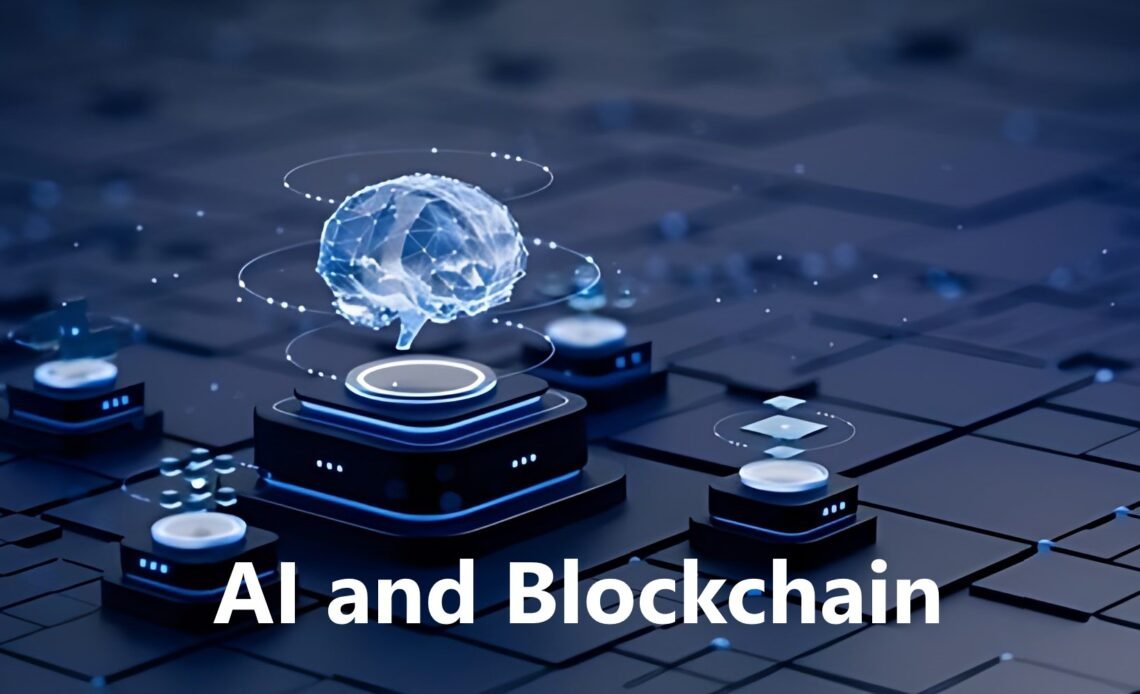Blockchain and Artificial Intelligence are cutting-edge technologies in the vanguard of digital transformation, and each has the potential to significantly alter the landscape of a wide range of industries.
The integration of these systems could lead to novel economic structures, practical new applications, and significant advancements in existing technologies. Tractica’s market analysis predicts that the artificial intelligence industry will increase from its current $9.5 billion to $118 billion by 2025.
Similarly, when asked about blockchain technology, the vast majority of experts we surveyed said it is central to their company’s efforts.
What Is Blockchain?
Data is stored in blocks on the blockchain, making it a decentralized ledger. Each block includes information that references the data in a preceding block. Data stored in a blockchain is encrypted using cryptography, making it unalterable even by its creator. The consensus mechanism is a mathematical process that ensures that all participants in a
agree on a shared data set.
Industries dealing with large amounts of data (online video) can benefit from using blockchain because it facilitates storing, processing, and sharing of that data. Thanks to cryptography, the blockchain guarantees that all information is: Permanently stored in an immutable ledger, Verified without compromising the privacy of the user or the data it processes, and Easily shared.
What Is Artificial Intelligence?
When talking about Artificial Intelligence, we mean a computer’s ability to learn to do things that generally need human intelligence. To create intelligent programs, Artificial Intelligence uses Machine Learning techniques applied to neural networks that simulate how the human brain and nervous system work.
Artificial Intelligence can examine, categorize, and make predictions on various datasets. Artificial Intelligence can use machine learning to improve its models by analyzing training data. To guarantee that AI models remain accurate, the datasets provided to Artificial Intelligence must be regularly updated.
The Potential Benefits of Blockchain and AI Interaction
The potential for collaboration between these two cutting-edge technologies has yet to be thoroughly investigated. There is a wide range of potential applications for these improvements, and they will undoubtedly be investigated. Let’s look at the advantages of combining blockchain technology with artificial intelligence.
Data Standardization
There needs to be more uniformity in the data collected by the various services we use, and this information is typically maintained in siloed databases. Using hash functions, blockchains may consistently keep all of their data. Since blockchains convert data into a string of a predetermined length, this standardizes data and drastically reduces data size.
AI and Encryption
Due to the use of encryption, data saved on blockchains are incredibly safe, making them perfect for keeping confidential information. This information can unlock potential advantages, usefulness, and ease of service. Companies involved with the data must invest much in security measures to ensure its integrity. This information can be stored in an encrypted form on blockchains, making it possible to protect the entire database with just a few secret keys.
When processing encrypted data, AI can make use of algorithms that can do so in a secure manner.
Blockchain And Tracking AI Decisions
Expert humans must monitor and evaluate the reasoning behind each AI decision. Artificial intelligence has the potential to analyze a vast array of factors and then figure out which ones are crucial to the task at hand. Decisions made by Artificial Intelligence tasked with keeping tabs on money flows should be audited to ensure accuracy and explain how those choices were made. It can be an extremely daunting task for human experts, given the sheer volume of data that Artificial Intelligence analyzes.
The blockchain’s decentralized ledger can be used to keep track of every step an Artificial Intelligence takes to conclude, allowing humans to monitor and control the Artificial Intelligence’s decision-making process more manageably. This enables inspection by human beings to ensure the data is authentic and has not been tampered with. When Artificial Intelligence’s benefits are combined with the immutability of blockchains, we may finally have an idea of how Artificial Intelligence makes its decisions and be able to audit them.
Managing Blockchains
Modern computers are blazingly fast, but they can only do something if they’re continually being pumped with new information and instructions. Consequently, due to the encrypted nature of blockchains, they place a tremendous burden on the processing power of conventional computers when they are in use. To function, blockchains need a lot of juice, and Bitcoin is the poster child for this. The hashing algorithms used to verify Bitcoin transactions on the blockchain consume many computational resources because they must try every possible combination of characters.
Incorporating Artificial Intelligence can help blockchains manage tasks more intelligently, effectively, and cost-effectively, moving away from the brute-force approach taken by traditional computers. Using machine learning, a mining algorithm could improve at cracking codes over time. Artificial Intelligence will be able to rapidly enhance its code-breaking abilities, in contrast to human experts who would need significant training time. However, this can only occur if the necessary data is provided to the Artificial Intelligence.
An Innovative Strategy for the Future
Combining Artificial Intelligence with blockchain creates an immutable, secure, and distributed system. Numerous sectors can make significant strides in data and information security using this approach.
However, more research needs to be done into the potential benefits of combining Artificial Intelligence with blockchain. Additionally, there are ongoing initiatives focused on the ground-breaking combination. If these two technologies are brought together, data can be used in ways previously thought impossible.
Each of these technologies has its unique effect on and method of executing data, so combining them makes perfect sense. It may enable data mining to reach previously unimaginable heights.

